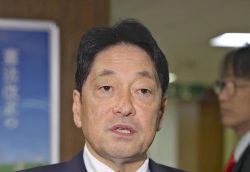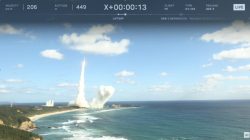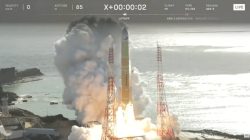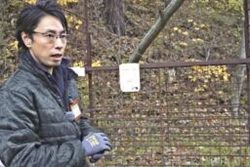Okinawa: 1,800 Tons of Unexploded Bombs Still Unrecovered; GSDF Handles 400-600 Cases Per Year
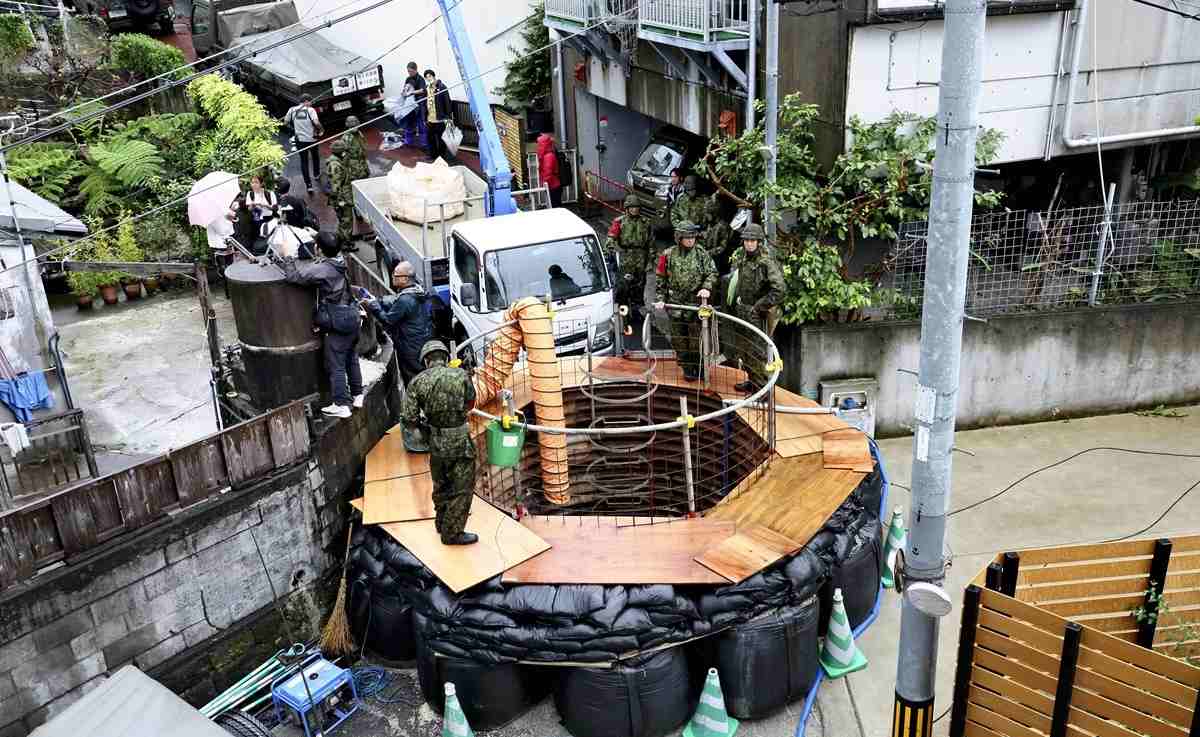
GSDF members prepare to dispose of the bomb from a bunker made of sandbags and metal plates on Sept. 29 in Naha.
10:02 JST, October 19, 2024
NAHA — As of this summer, the Ground Self-Defense Force has handled 40,000 cases of unexploded ordnance disposal in Okinawa Prefecture, the setting of fierce ground battles in the final days of the Pacific War.
The GSDF has been handling unexploded ordnance disposal in Okinawa Prefecture since it was returned to Japan in 1972. It is estimated that more than 1,800 tons of ordnance have yet to be disposed of in the prefecture. Even 79 years after the war ended, it still casts a dark shadow over Okinawa.

An unexploded bomb found in a residential district in Naha on Sept. 29.
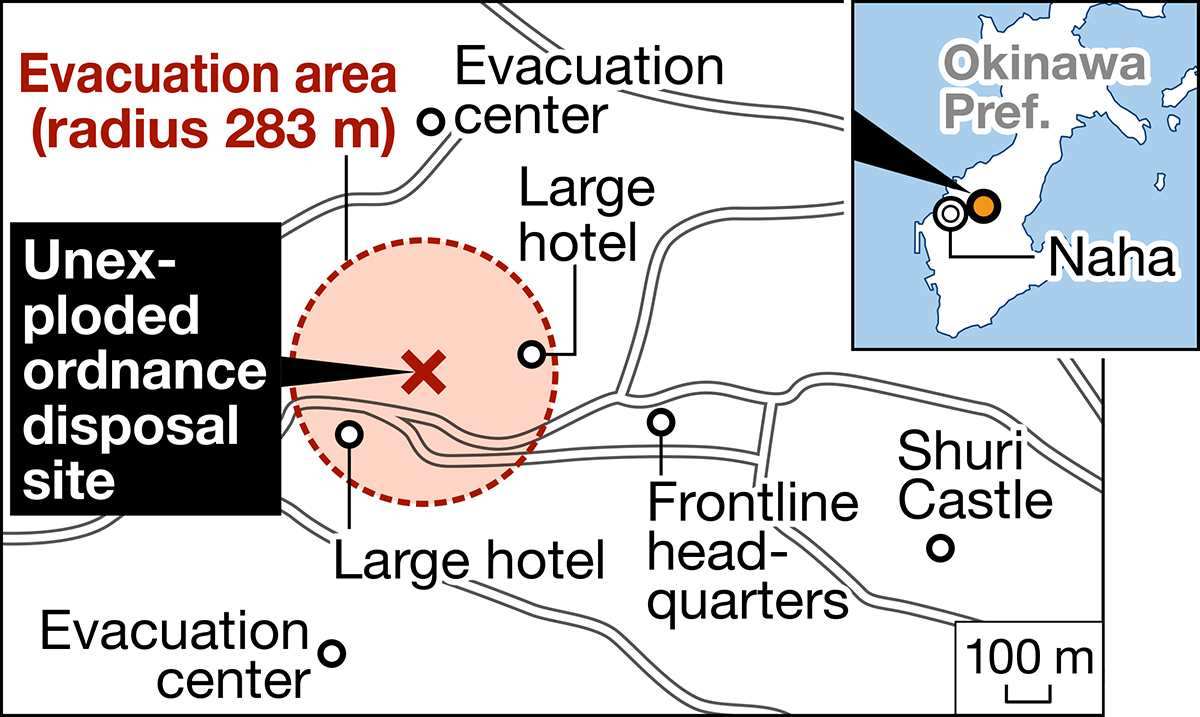
“You need to leave your home by 8:50 a.m.,” officials from the Naha municipal office told residents on the morning of Sept. 29. The residential district is about 1 kilometer away from Shuri Castle in Naha, where brutal fighting took place during the war.
The officials were going door-to-door to tell residents to evacuate as large-scale unexploded ordnance disposal would be carried out in the area.
About 1,400 locals and tourists staying at hotels were forced to evacuate, causing upheaval to their lives and the local economy.
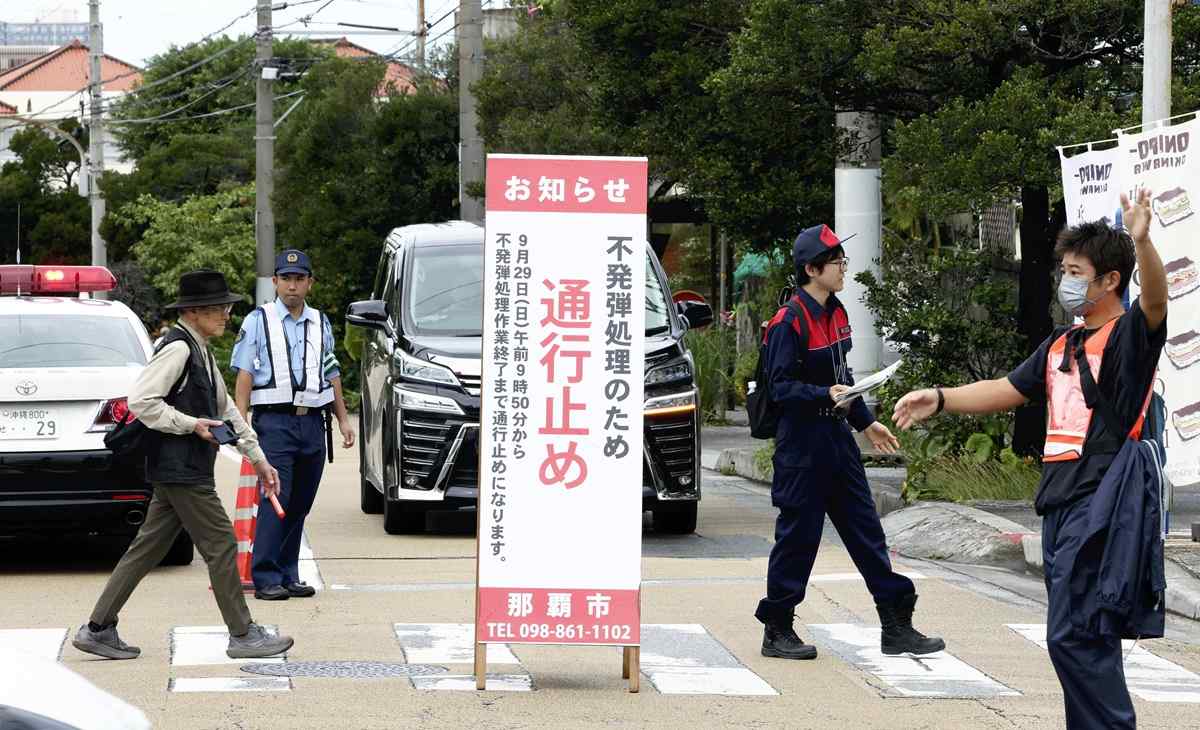
Officials from the Naha municipal government ask residents to evacuate.
Signs were set up throughout the area to notify people of scheduled traffic restrictions, and officers from police and fire departments cooperated to evacuate residents and others from the affected areas.
The evacuation call extended to a 283-meter radius of the bomb disposal site, and residents from about 470 households, employees at about 80 businesses and guests staying at two large hotels with more than 300 rooms were asked to evacuate. The municipal government set up shelters for them in three schools outside the danger zone.
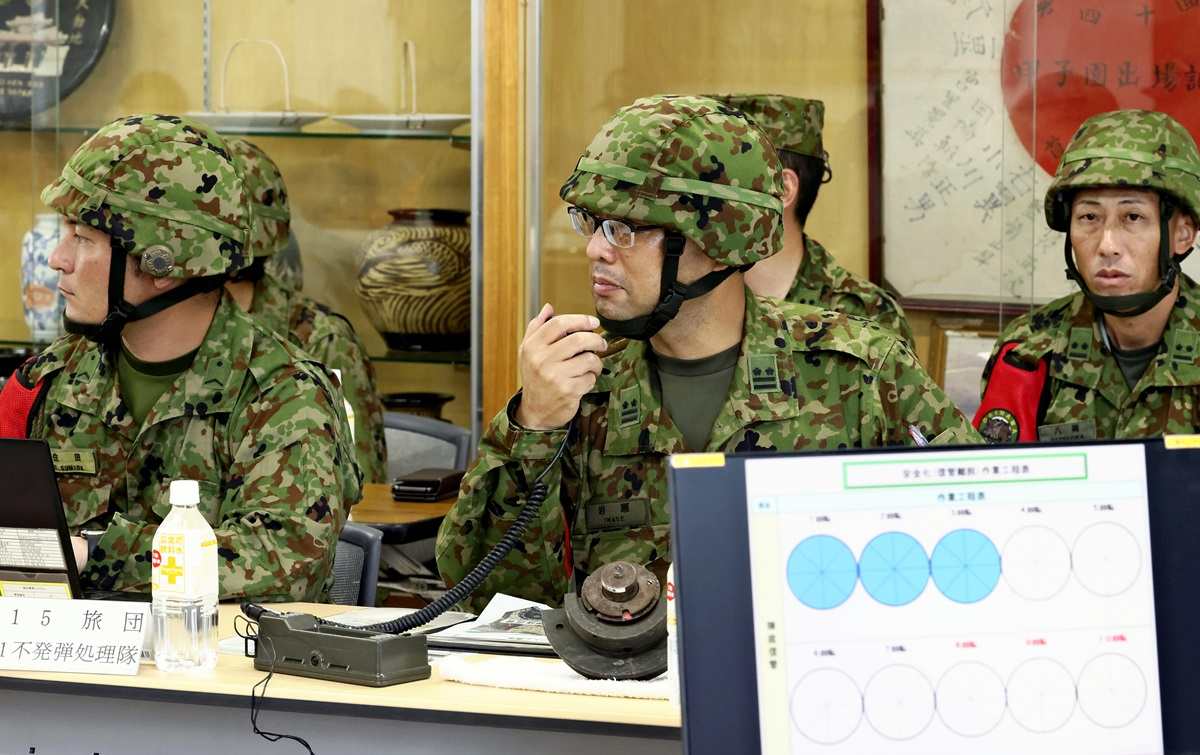
An SDF member gives instructions from frontline headquarters to members on the scene.
“It’s scary to think there are still unexploded bombs in the area,” a 76-year-old living near the disposal site said before quickly evacuating.
The two hotels asked their guests and those with reservations to check out early before traffic was restricted. Some guests simply canceled their reservations.
Danger of explosion
The unexploded bomb that caused the disruptions was found in December last year about a meter underground during sewer works. It was confirmed to be a 250-kilogram U.S.-made bomb measuring 36 centimeters in diameter and 119 centimeters in length. There was a risk of explosion if subjected to shock, high temperatures and other factors because a detonation cord was attached to the bottom of the explosive.
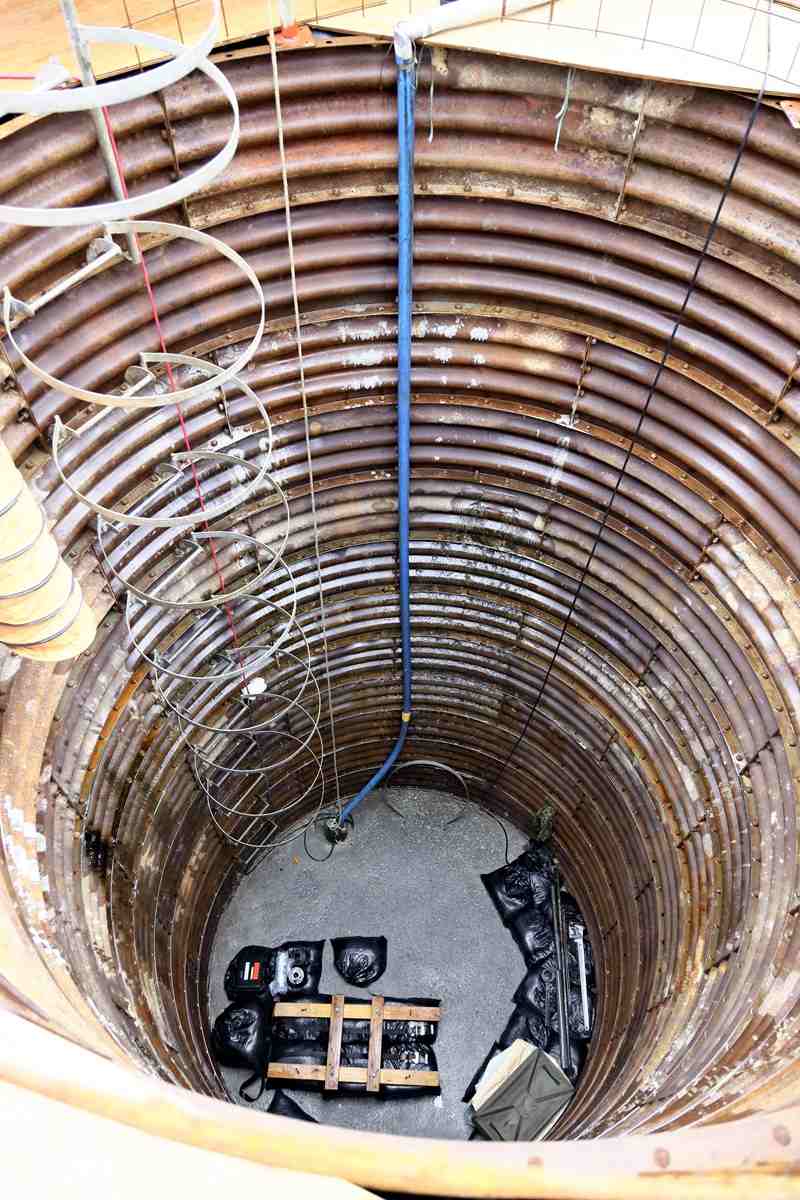
The cylindrical bunker where the detonation cord of the bomb was removed
Four people, including a young girl, were killed and 34 were injured in Naha in 1974 when an unexploded bomb exploded.
To remove the detonation cord and render the bomb safe, the GSDF built a bunker measuring 3 meters in diameter and 6 meters in height and surrounded by protective walls made of sandbags and metal plates. It took about 10 months and cost ¥20 million to complete the bomb disposal.
The GSDF’s 101st explosive ordnance disposal unit began bomb disposal operations on Sept. 29 at 10:45 a.m. Members of the GSDF worked in the strong cylindrical bunker and successfully removed the detonation cord in an hour. The bomb was confirmed to be safe about three hours after the evacuation began.
Disposals to take over 100 years
The Imperial Japanese Army built the 32nd Army Underground Headquarters as its command center near Shuri Castle. The headquarters came under fierce attack by U.S. troops which landed on Okinawa Island in 1945. On Oct. 10, 1944, Naha had suffered severe damage from U.S. airstrikes.
According to the Okinawa prefectural government, the U.S. military used some 200,000 tons of ordnance in the Battle of Okinawa, with nearly 10,000 tons left unexploded. The U.S. forces recovered and disposed of about 5,500 tons of them, and the GSDF took over disposal operations after the United States returned Okinawa to Japan.
The GSDF had disposed of 1,884 tons of unexploded ordnance among the 40,000 cases it had handled as of Aug. 23, and as of Sept. 27, the numbers had increased to 1,886 tons and 40,047 cases. While there has been a decline in the amount of disposal cases, unexploded bombs are still being discovered at a rate of more than one per day in the prefecture.
The 101st explosive ordnance disposal unit of about 20 members operates around the clock and handles 400 to 600 unexploded ordnance disposal cases a year. However, some experts say it will take more than 100 years to dispose of all the dangerous relics of the war in the prefecture.
Bomb found at airport
NAHA — An unexploded bomb was recently found at Naha Airport in Okinawa Prefecture.
On Oct. 3, an object believed to be a U.S.-made 60mm mortar shell was found at a construction site on the airport grounds.
It was deemed not to pose any risk of explosion, and a Ground Self-Defense Force unit disposed of it.
The airport, which was developed by the Imperial Japanese Navy, was attacked by the U.S. military during World War II.
Prior to the construction work at the site, a total of seven ordnances, including a mine and a 5-inch U.S.-made rocket, were removed after they were discovered during magnetic surveys conducted between March and June. All were deemed to pose no explosion risk.
Related Tags
"Features" POPULAR ARTICLE
-

Sanrio to Open Museum in Yamanashi Pref. Dedicated to Founder, Exhibits Include Hello Kitty, Other Characters
-
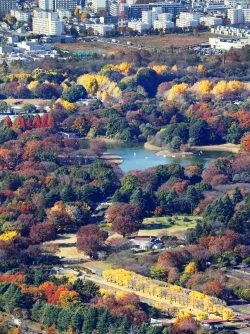
Autumn Foliage Surrounds Visitors to Tokyo’s Showa Kinen Park
-

My Daughter No Longer Speaks to Me, But I Want to See Her and My Grandchild
-

Kumamoto: Public Bath Refurbished as Library Where You Can Chat, Take Photos
-

Frozen Vegetables: Demand Rises for Convenient, Tasty Domestic Produce
JN ACCESS RANKING
-

Keidanren Chairman Yoshinobu Tsutsui Visits Kashiwazaki-Kariwa Nuclear Power Plant; Inspects New Emergency Safety System
-

Tokyo Economic Security Forum to Hold Inaugural Meeting Amid Tense Global Environment
-

Imports of Rare Earths from China Facing Delays, May Be Caused by Deterioration of Japan-China Relations
-

University of Tokyo Professor Discusses Japanese Economic Security in Interview Ahead of Forum
-

Japan Pulls out of Vietnam Nuclear Project, Complicating Hanoi’s Power Plans








